Have you ever wondered how some dogs seem to have a sixth sense? Especially when it comes to helping people in need? From guiding the visually impaired to providing comfort to those struggling with mental health issues. All types of service dogs are the unsung heroes of the dog world. They come in different shapes, sizes, and breeds, each specializing in unique tasks to assist their human companions.
In this comprehensive article, we will embark on a journey to unravel the fascinating world of service dogs. We will explore their diverse roles and the profound impact they have on the lives of those they serve. Whether you’re curious about the training process, legal rights, or simply want to learn more about these incredible furry friends. Well we’ve got you covered.
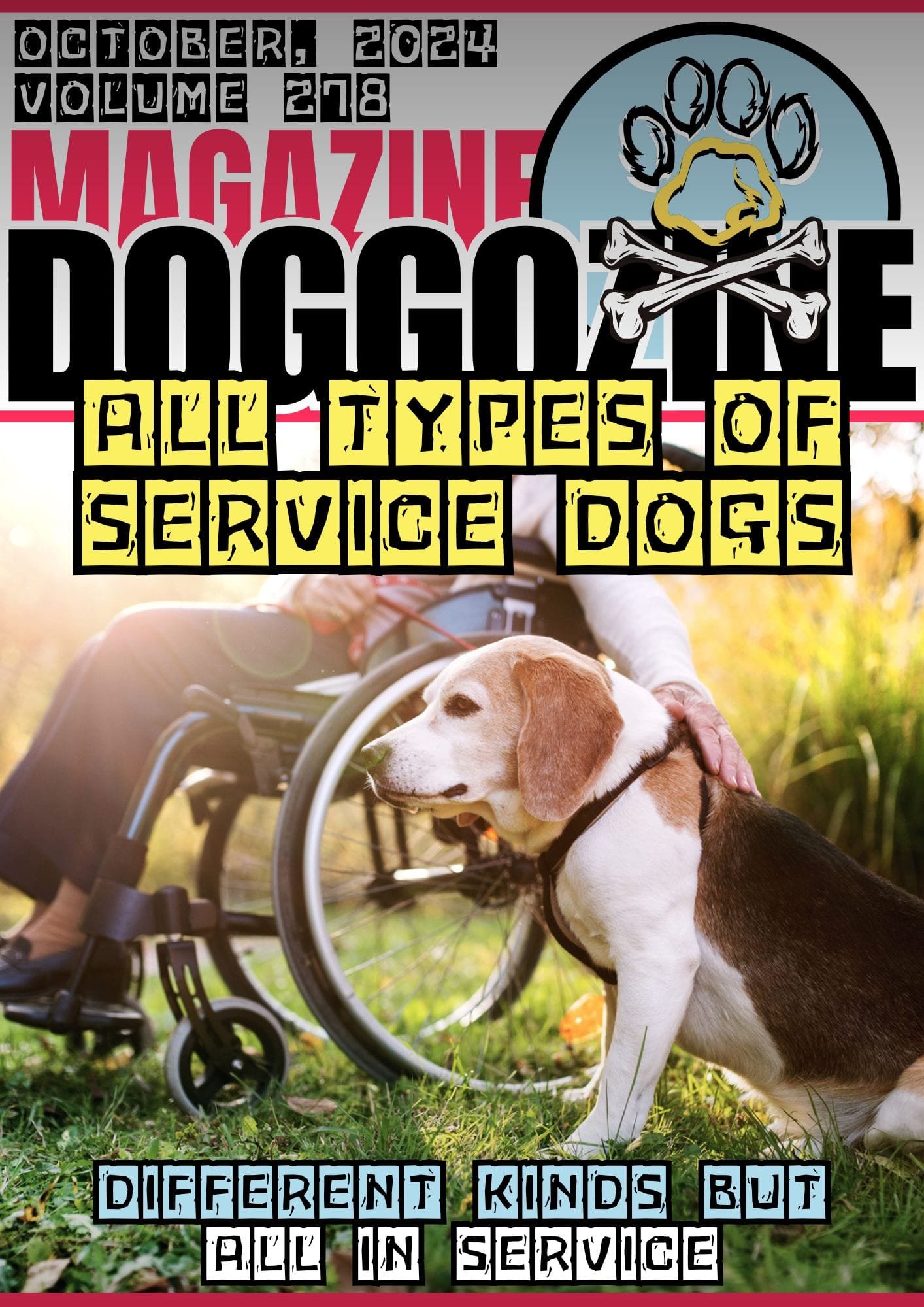
EXPLORING THE DIFFERENT TYPES OF SERVICE DOGS
Get ready to delve into heartwarming stories, essential training tips, and valuable insights into the various types of service dogs. Join us as we celebrate the unwavering loyalty and unwavering dedication of these remarkable dogs. These furry companions bring joy, independence, and companionship to individuals facing various challenges.
Introduction to Service Dogs
The service dogs are incredible companions and work tirelessly to assist individuals with disabilities and impairments. These highly trained canines play a vital role in enhancing the independence, mobility, and overall well-being of their human partners.
All types of service dogs are remarkable creatures that bring immeasurable benefits to individuals with disabilities and impairments. The service dogs training, their skills, and unwavering dedication, all this contribute to the overall well-being and independence of their human partners. In the following sections, we will delve deeper into the specific types of service dogs. We will show you the incredible tasks they perform to improve lives.
The significance of the different types of service dogs
1. Assistance and Independence:
– All types of service dogs are specifically trained to perform tasks that aid individuals with disabilities. Some are guiding individuals with visual impairments. Other types of service dogs are alerting those who are deaf or hard of hearing to important sounds. There are some that are responding to seizures, medical types of service dogs are there to lend a helping paw.
2. Emotional Support:
– All types of service dogs not only assist with physical tasks but also provide emotional support to their owners. Their presence can provide much-needed peace of mind, stability, and a sense of companionship.
3. Public Accommodation:
– Under the Americans with Disabilities Act, all types of service dogs are granted legal rights to access public spaces. These are including restaurants, transportation, and housing accommodations. This ensures that individuals with disabilities can fully participate in society with the assistance of their service dogs.
4. Training and Certification:
– All Types of service dogs undergo rigorous and specialized training. They need to acquire the necessary skills to assist individuals with specific disabilities or needs. These dogs are taught basic obedience skills, specific tasks related to their designated roles, and how to react calmly in various situations.
5. Importance of Partnerships:
– The bond between a service dog and its owner is unique and based on trust, teamwork, and mutual understanding. All types of service dogs become an essential part of their owners’ lives. They are providing not just physical support but also companionship and unwavering loyalty.
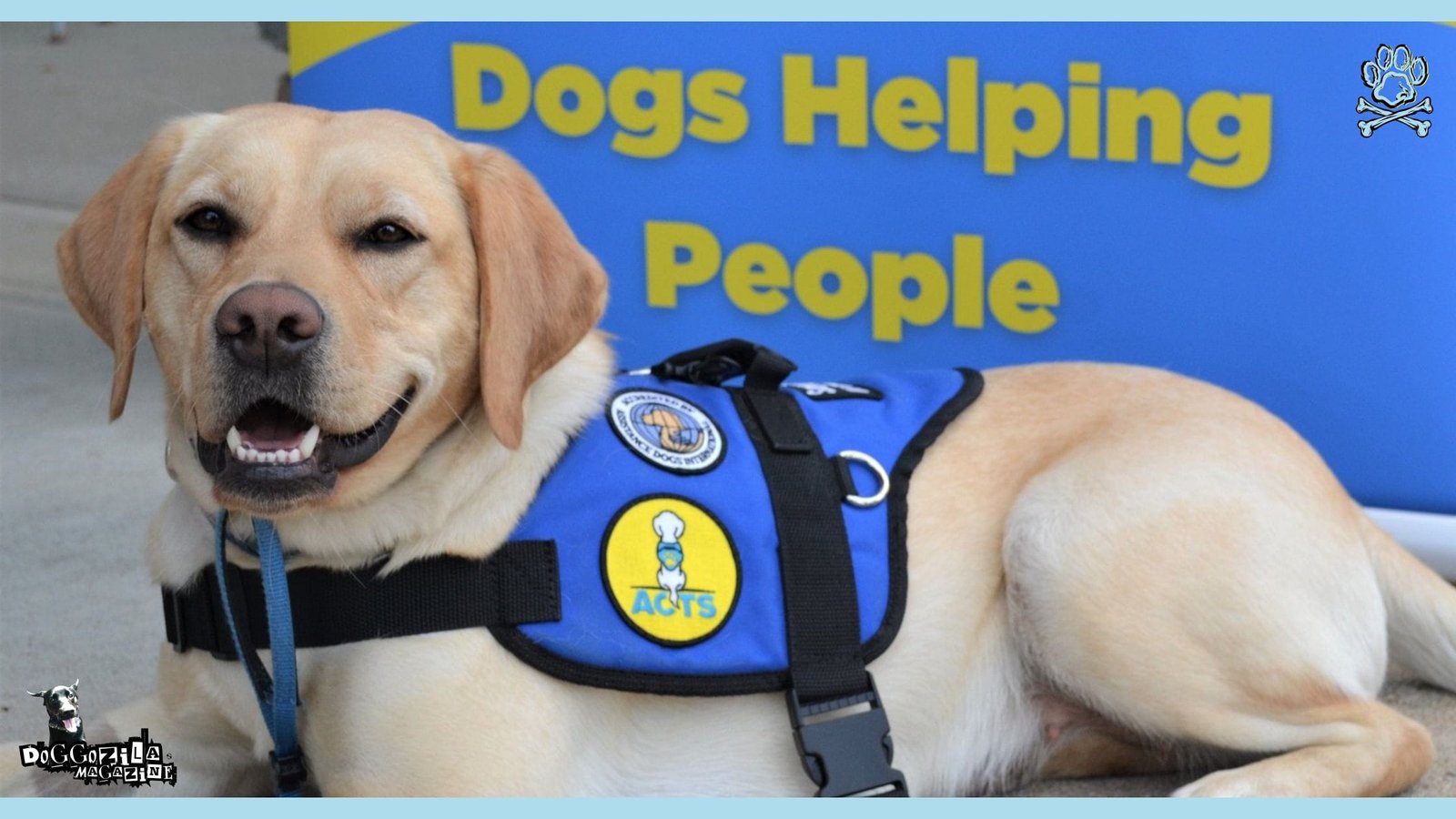
FIRST TYPE OF SERVICE DOGS ARE GUIDE DOGS
Guide dogs play a vital role in providing assistance and independence to individuals with visual impairments. These highly trained dogs act as the eyes for their visually impaired partners. They are helping them navigate through the world with confidence and safety.
Training and Skills
Guide dogs undergo extensive training to develop the skills necessary for their role. They are taught to navigate various environments, including busy streets, crowded places, and public transportation. They learn to respond to commands such as “forward,” “left,” and “right,” guiding their handlers around obstacles and towards their intended destinations.
Key Responsibilities
Guide dogs take their responsibilities seriously, serving as steadfast companions to their visually impaired partners.
They offer a range of essential functions, including:
1. Navigating: Guide dogs carefully lead their handlers, using their intelligence and judgment to ensure a safe journey.
2. Obstacle Avoidance: They skillfully recognize obstacles, such as curbs, stairs, and low-hanging branches, guiding their handlers to navigate around them.
3. Traffic Awareness: These remarkable dogs are trained to halt at curbs. Allowing their handlers to assess traffic and cross streets safely.
4. Finding Objects: Guide dogs are skilled at locating objects such as doors, elevators, and seats. Providing freedom and independence for their handlers.
The Bond Between Guide Dog and Handler of The Service Dog
The relationship between a guide dog and its handler is built on trust, companionship, and mutual reliance. Handlers rely on their guide dogs to provide a sense of security, confidence, and mobility. In return, they provide care, love, and a forever home for their dedicated furry partners.
- “My guide dog has changed my life.
With her by my side, I am able to move through the world with independence and freedom.
She is not just a guide, but a true companion who understands me and my needs.”– Jessica, a guide dog owner
Guide dogs are a remarkable example of the partnership between humans and animals. Their skills, dedication, and unwavering loyalty make them invaluable assets to individuals with visual impairments. They are enriching their lives and empowering them to overcome challenges with newfound confidence.

HEARING TYPE OF SERVICE DOGS: ASSISTING INDIVIDUALS WITH HEARING IMPAIRMENTS
Hearing dogs play a crucial role in assisting individuals with hearing impairments by alerting them to important sounds and noises. These highly trained canines act as the ears for their human partners. They provide them with a sense of security and independence. Let’s take a closer look at how hearing dogs contribute to the lives of those with hearing disabilities.
Training and Skills
Hearing dogs undergo extensive training to develop their specialized skills. They are taught to recognize and respond to various sounds, including doorbells, smoke alarms, and telephone rings. Through positive reinforcement and repetition, they become adept at alerting their owners to these auditory cues.
Alarming and Alerting
When a hearing dog detects a specific sound, it is trained to physically alert its owner. This may involve gently nudging them or making direct eye contact to gain their attention. The dog then leads the person towards the source of the sound. Ensuring they do not miss any important information or potential danger.
Building Confidence and Independence
For individuals with hearing impairments, hearing dogs provide a sense of security and independence. By acting as constant companions, these dogs help alleviate feelings of isolation and reliance on others for auditory information. With their assistance, individuals can confidently navigate their surroundings and engage more fully in daily activities.
All Types of Service Dogs are Life-Changing Partnerships
The partnership between a hearing dog and its owner is built on trust and mutual support. These remarkable animals not only enhance their owners’ quality of life but also provide emotional companionship and unwavering loyalty. The bond formed between a hearing dog and their human partner is truly life-changing. Often is said that the hearing dogs are superheros.
That is why the hearing types of service dogs are invaluable assets to individuals with hearing impairments. Their ability to alert and assist their owners with crucial sounds and noises enhances independence and improves overall well-being. Through their specialized training and unique skills, hearing dogs are instrumental in enabling individuals with hearing disabilities to lead fulfilling and empowered lives.

SEIZURE ALERT AND RESPONSE TYPES OF SERVICE DOGS
Seizure alert and response dogs are highly trained types of service dogs. They provide a crucial support system for individuals with seizure disorders. These remarkable canines play a vital role in detecting and responding to seizures. Ensuring the safety and well-being of their owners.
Detecting Seizures
Seizure alert dogs are trained to recognize the early signs and symptoms that indicate an impending seizure. Through their acute senses and specialized training, they can detect subtle changes in body language, scent, and behavior. This unique ability allows them to provide an early warning to their owners. Giving them valuable time to prepare and seek a safe environment.
Response and Assistance
In addition to their alert capabilities, seizure response dogs are trained to respond quickly and effectively during a seizure episode. They are taught to perform various tasks such as providing stability and balance during seizures. They can activate emergency alert systems, retrieving medications, and seeking help from nearby individuals. These dogs are also trained to stay calm and provide comfort to their owners during and after a seizure episode.
All Types of Service Dogs are Life-Saving Companions
Seizure alert and response dogs not only assist during seizures but also provide emotional support and companionship on a daily basis. Their presence offers a sense of security and independence to individuals with seizure disorders. Allowing them to live more fulfilling lives. These devoted companions provide reassurance to both the dog owners and their families, offering much-needed peace of mind.
Seizure alert and response dogs are extraordinary types of service animals. They play a crucial role in the lives of individuals with seizure disorders. Their ability to detect seizures in advance and provide timely assistance ensures the well-being and safety of their owners. These highly trained canines are not just service animals, but devoted a companions. They bring comfort and independence to those in need.
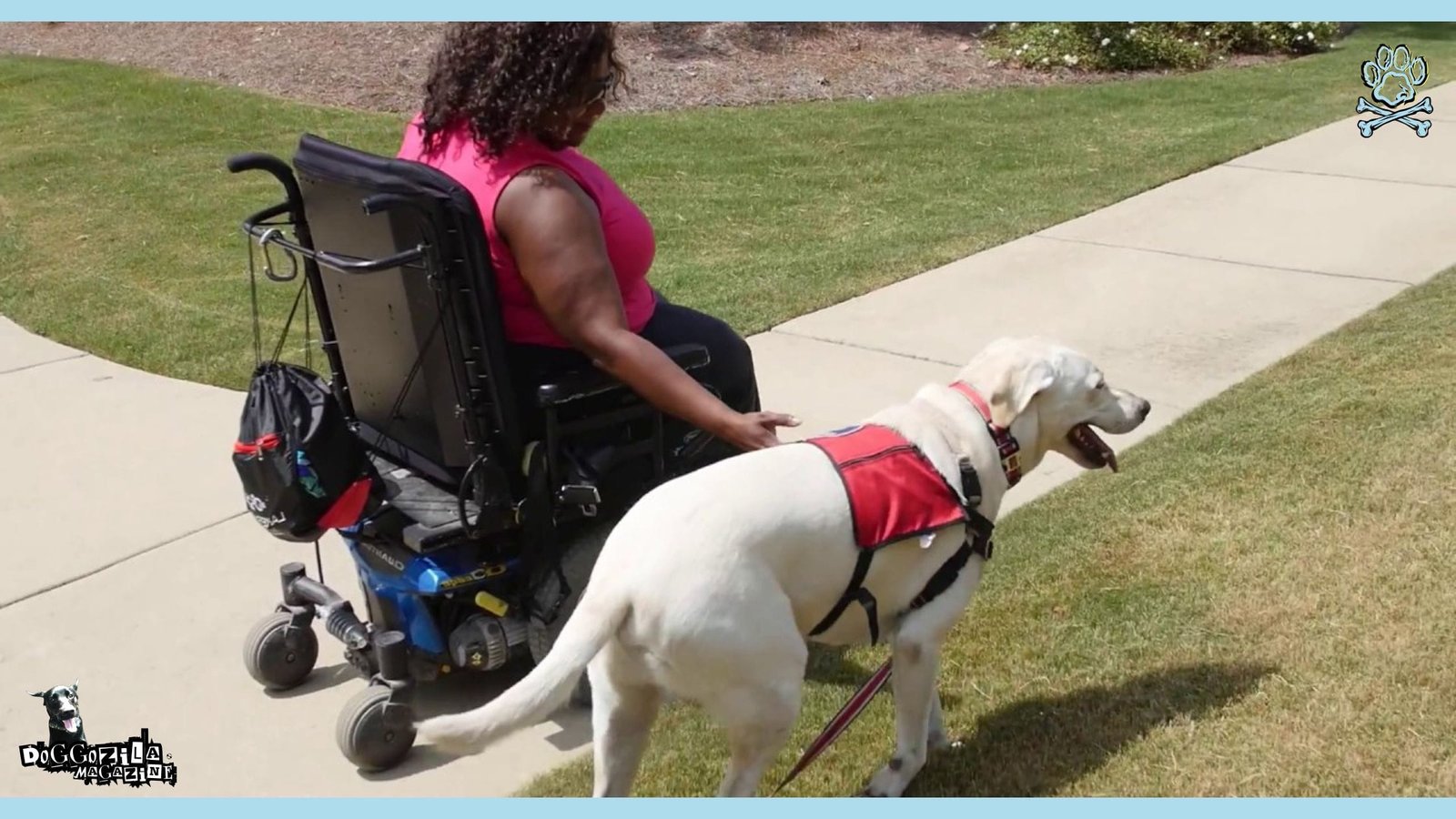
DIABETIC ALERT TYPES OF SERVICE DOGS
Diabetic alert dogs (DADs) are highly trained types of service dogs that provide life-saving assistance to individuals with diabetes. These incredible canines possess the remarkable ability to detect fluctuations in blood sugar levels. Enabling them to alert their owners before potentially dangerous situations arise.
Roles of Diabetic Alert Dogs
The primary role of a diabetic alert dog is to sense chemical changes in their owner’s body odor. This happens as blood sugar levels rise or drop. Through intensive training, these dogs learn to identify these scent changes and communicate the alert in various ways. They start touching their owner or fetching a specific object.
Upon receiving an alert, individuals with diabetes can take immediate action. Checking their blood sugar levels or administering insulin or glucose. This timely response helps to prevent complications and maintain optimal health.
Life-saving Companions
Having a diabetic alert dog by their side provides peace of mind! This types of service dogs offer a heightened sense of security for individuals with diabetes. These loyal and dedicated canines become valued members of their owner’s support team. They are offering unwavering companionship and assistance in managing their condition.
The impact of diabetic alert dogs goes far beyond alerting their owners to blood sugar fluctuations. These remarkable types of service dogs improve the quality of life for individuals with diabetes. They allow them to live more independently and confidently.
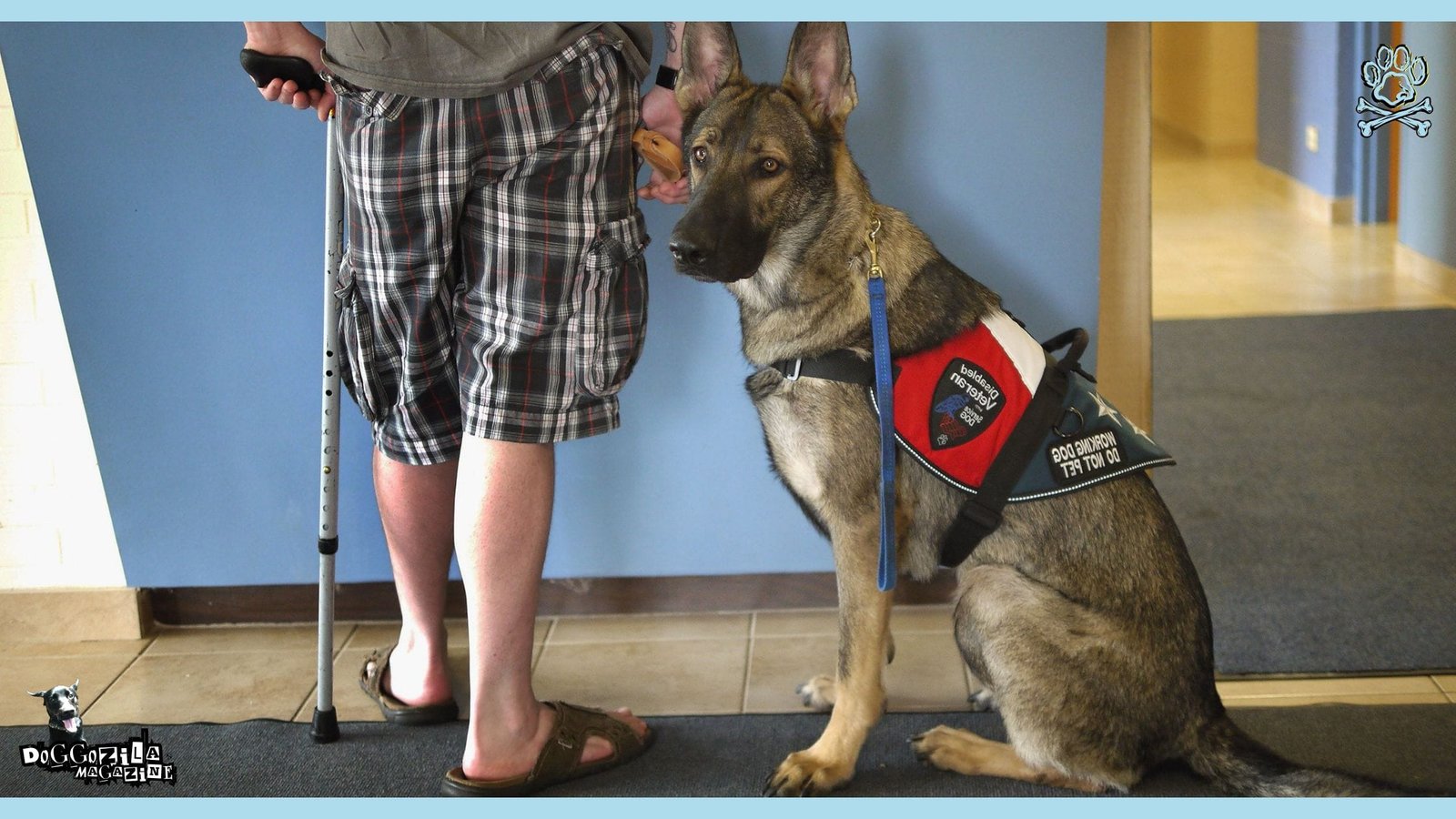
ALLERGY DETECTION TYPES OF SERVICE DOGS
Allergy detection dogs are specially trained canine companions that play a crucial role in identifying allergens and ensuring the safety of individuals with severe allergies. These remarkable dogs undergo rigorous training to develop their scent detection abilities, allowing them to accurately detect various allergens in different settings.
Reliable Allergen Detection
Allergy detection dogs are trained to recognize specific allergens, such as peanuts, tree nuts, dairy products, eggs, wheat, fish, shellfish, and even insect bites. By utilizing their powerful sense of smell, these dogs can locate even trace amounts of allergens that may be hidden or difficult to detect by other means. Their ability to identify allergens provides individuals with severe allergies much-needed peace of mind and allows them to navigate their surroundings with increased confidence.
Enhanced Safety and Prevention
Once an allergen is detected, allergy detection dogs communicate this information to their owners or handlers, alerting them to the presence of allergens in their environment. This enables individuals to take immediate precautions, such as avoiding contact with the allergen or administering medication if necessary. The timely detection and warning provided by these dogs significantly reduce the risk of allergic reactions and potentially life-threatening situations.
Committed Training and Trustworthy Partners
Allergy detection dogs are trained using positive reinforcement techniques, ensuring their reliability and accuracy in detecting allergens. These dogs undergo extensive training to recognize specific scents associated with allergens and to indicate their findings to their handlers. The bond between an allergy detection dog and their owner or handler is built on trust and teamwork, as they work together to maintain a safe and allergen-free environment.
Making a Difference in the Lives of Allergy Sufferers
Allergy detection dogs provide essential support to individuals with severe allergies, allowing them to lead more independent and secure lives. The unwavering dedication and skills of these dogs help to mitigate the potential risks associated with allergic reactions, providing a sense of safety and reassurance. With their remarkable scent detection abilities, allergy detection dogs offer invaluable assistance in identifying allergens and safeguarding the well-being of those with allergies.
Remember, when interacting with an allergy detection dog, it is crucial to respect their role and avoid distracting them from their vigilant task. These dogs are on a mission to keep their owners safe and deserve our admiration and appreciation for the vital work they do.
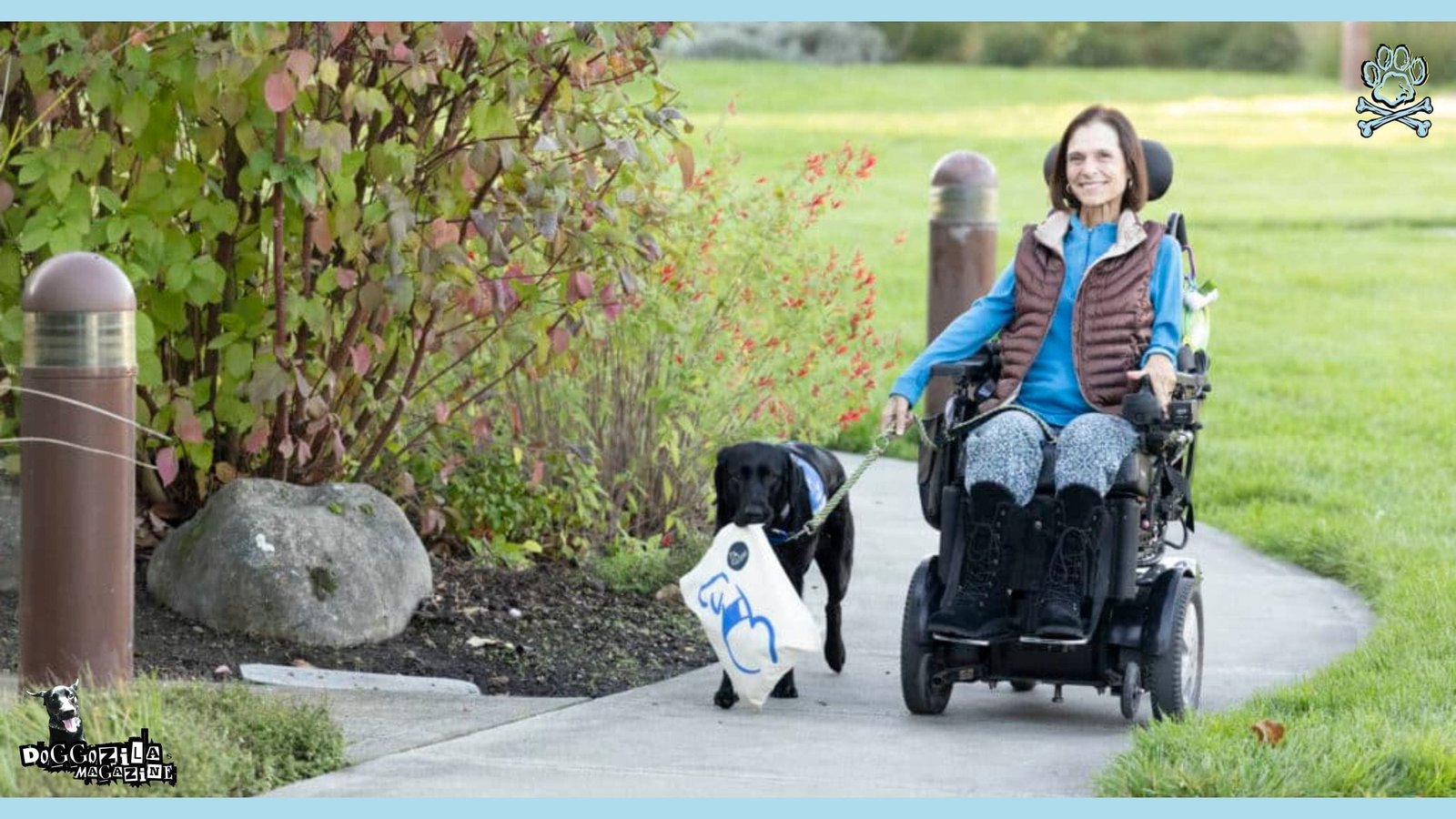
MOBILITY ASSISTANCE TYPES OF SERVICE DOGS
Mobility assistance dogs are specially trained to provide support and assistance to individuals facing mobility challenges. These remarkable canine companions play a crucial role in enhancing the independence and quality of life for their human partners.
Tasks and Support
1. Opening Doors: Mobility assistance dogs are trained to open doors, both within homes and in public spaces. They can use their paws or specialized equipment to manipulate door handles and push doors open, enabling individuals with limited mobility to navigate their surroundings more easily.
2. Retrieving Items: These dogs can fetch items for their owners, such as keys, wallets, or other objects that may be out of reach. With their excellent training, they can pick up and carry various objects, providing a helping paw when their human partners need it most.
3. Assisting with Mobility Aids: Mobility assistance dogs are skilled in guiding their owners with mobility aids such as canes, walkers, or wheelchairs. They can offer stability and balance support, ensuring their partners’ safety as they navigate different terrains or environments.
4. Emergency Situations: In critical situations, these dogs are trained to respond appropriately. They can seek help, activate a medical alert button, or alert others to the emergency, providing much-needed peace of mind and quick assistance.
Training and Qualifications
Mobility assistance dogs undergo specialized training to perform these essential tasks effectively. They are taught advanced obedience skills, as well as specific mobility-related tasks tailored to their owner’s needs. The training process involves months of structured guidance and practice, ensuring that the dogs develop the skills required for supporting individuals with mobility challenges.
To qualify as a certified mobility assistance dog, they must demonstrate proficiency in their tasks and exhibit exceptional behavior in public spaces. Organizations that train and place these dogs follow established guidelines and standards to ensure the highest level of competence and reliability.
The Impact of Mobility Assistance Dogs
The presence of a mobility assistance dog can significantly enhance the quality of life for individuals facing mobility challenges. These loyal companions provide invaluable support, not only with physical tasks but also by boosting their owners’ confidence and independence. The bond between a mobility assistance dog and their human partner is built on trust, companionship, and mutual respect.
In daily life, mobility assistance dogs enable their owners to navigate their environments more easily, giving them a newfound sense of freedom and autonomy. Whether it’s opening doors, retrieving needed items, or providing stability and support, these highly trained dogs are incredible allies for individuals with mobility challenges.
As mobility assistance dogs continue to make a positive impact, it is essential to recognize and appreciate the dedication, skills, and unwavering loyalty these types of service dogs bring to the lives of those in need.

AUTISM SERVICE DOGS
Autism types of service dogs play a valuable role in providing comfort and assistance to individuals on the autism spectrum. These highly trained canines are specifically matched with individuals to meet their unique needs and challenges.
Here are some ways autism types of service dogs support individuals with autism:
Emotional Support and Companionship
Autism service dogs provide a sense of emotional support and companionship to individuals with autism. These dogs recognize and respond to specific emotional cues, offering comfort during times of distress or anxiety. Their calming presence can help alleviate stress and provide a much-needed sense of security for individuals on the autism spectrum.
Sensory Support
Individuals with autism often experience sensory sensitivities and challenges in processing sensory information. Autism service dogs offer sensory support by providing deep pressure therapy, which can help regulate sensory input and promote a sense of calm. Additionally, these dogs can assist in redirecting attention during overwhelming situations and provide a grounding presence.
Safety and Assistance
Autism service dogs are training to assist with safety concerns and promote independence. They are training to prevent the individual from wandering or bolting by using tethers or gentle restraints. These dogs also help in locating a missing individual in the event they become lost. With their strong bond and training, autism service dogs can provide a much-needed sense of security and peace of mind to both the individual with autism and their caregivers.
Social Skills Development
Interacting with others and navigating social situations can be challenging for individuals with autism. Autism service dogs can act as social facilitators, helping to build social skills and improve social interactions. These dogs can serve as a bridge between the individual with autism and others, offering a non-judgmental and comforting presence that can enhance communication and socialization.
Task Assistance
Autism service dogs are training to perform specific tasks that assist individuals with autism in their daily lives. These tasks may include interrupting self-harming behaviors, providing tactile stimulation when needed, or reminding the individual to engage in self-care activities such as eating or taking medication. By assisting with these tasks, autism service dogs can enhance the individual’s independence and quality of life.
Autism service dogs provide crucial support, comfort, and assistance to individuals on the autism spectrum. Their specialized training and unique bond with their human partners make them valuable assets in navigating the challenges of autism. These amazing dogs contribute to the well-being and overall quality of life for individuals with autism, promoting independence, social interactions, and emotional well-being.
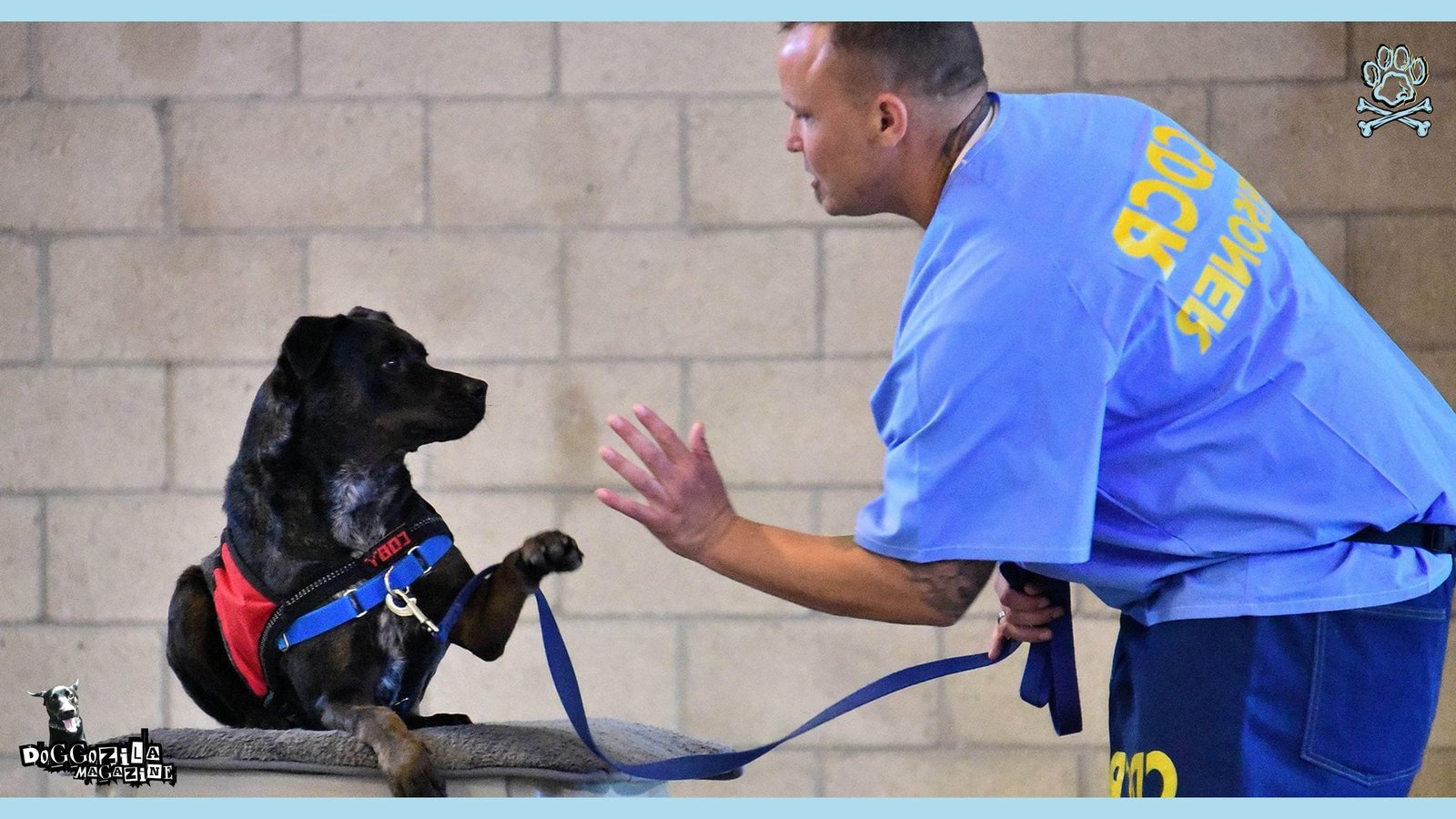
PSYCHIATRIC TYPES OF SERVICE DOGS: PROVIDING CRUCIAL SUPPORT
The psychiatric types of service dogs play a vital role in supporting individuals with psychiatric disabilities, offering assistance with emotional regulation and performing specific tasks. These highly trained canines provide invaluable support and help their owners navigate the challenges associated with mental health disorders.
Emotional Regulation Assistance
One of the primary functions of psychiatric types of service dogs is to assist individuals in managing and regulating their emotions. These dogs are training to detect signs of distress or anxiety and intervene accordingly. By sensing changes in their owner’s behavior or body language, they can offer comfort and redirection, helping to alleviate emotional distress. This emotional support can be especially crucial for individuals with conditions like anxiety disorders or PTSD.
Task Performance
In addition to provide emotional support, psychiatric types of service dogs are also training to perform specific tasks to aid their owners in their daily lives. These tasks may include fetching medication, reminding individuals to take their medications on time, or even using their bodies to create space and alleviate anxiety in crowded environments. The presence of a psychiatric service dog can provide a sense of security and stability, enabling individuals to navigate various situations that might otherwise be challenging.
Partners in Recovery
Psychiatric service dogs are not a substitute for professional mental health treatment, but they can be an essential addition to an individual’s treatment plan. Working as part of a larger treatment team, these dogs offer companionship, unconditional love, and a source of comfort for their owners. Their presence can also help reduce feelings of loneliness, anxiety, and depression, improving overall mental well-being.
Overall, psychiatric types of service dogs provide crucial support to individuals with psychiatric disabilities. By assisting with emotional regulation and performing specific tasks, these highly trained canines contribute to the well-being and quality of life of their owners. Their presence allows individuals to navigate daily challenges, promoting independence and empowerment.
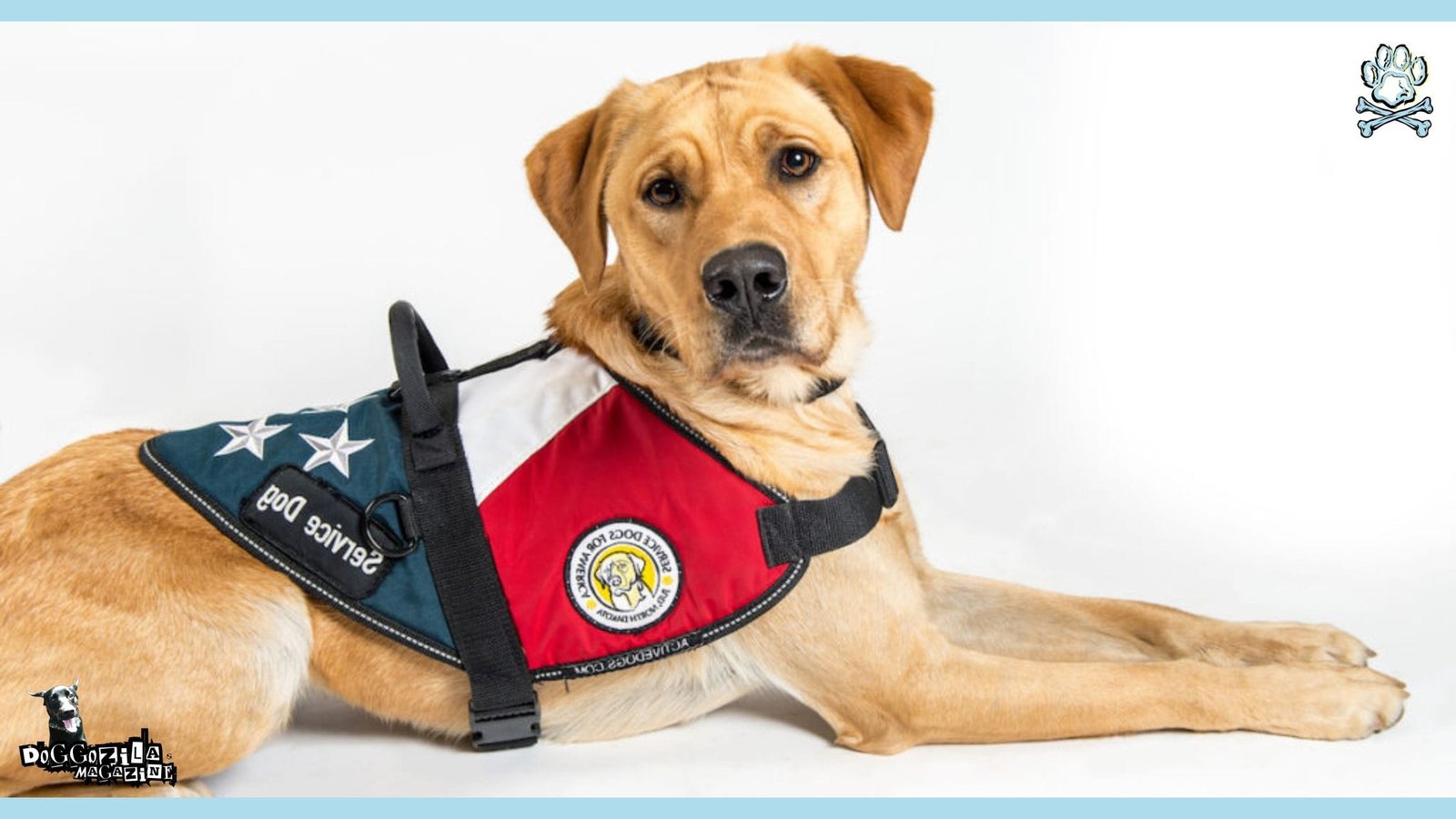
THERAPY DOGS
Therapy dogs are a special type of service dog that provides comfort, affection, and companionship to individuals in various settings. These incredible canines play a crucial role in improving the emotional well-being and overall quality of life for many people. Here, we will explore the therapeutic benefits of therapy dogs, their training process, and the diverse settings in which they make a difference.
The Therapeutic Benefits of Therapy Dogs
Therapy dogs have a remarkable ability to uplift spirits, reduce stress, and promote a sense of calmness. Their presence alone can bring comfort and provide emotional support to individuals in need. These dogs increase happiness and decrease loneliness, this make them invaluable assets in therapeutic environments.
Through their gentle demeanor and friendly nature, therapy dogs can help ease anxiety, particularly in hospital or healthcare settings. Research has shown that interactions with therapy dogs can lower blood pressure, reduce pain perception, and improve overall well-being. These benefits are particularly evident among individuals with mental health disorders, such as anxiety and depression.
Training and Certification
Therapy dogs undergo extensive training to ensure they behave well and are capable to handle various situations. They are training to be obedient, calm, and responsive to commands. Additionally, they are training to maintain focus in distracting environments and remain calm amidst unfamiliar sights, sounds, and smells.
To become certified therapy dogs, these canines must undergo evaluations and assessments to demonstrate their suitability for therapy work. They evaluate on their behavior, temperament, and ability to interact positively with individuals of all ages. Proper training and certification ensure that therapy dogs are reliable and capable of providing safe and effective support.
Settings Where Therapy Dogs Make a Difference
Therapy dogs work in a wide range of settings, each to offer unique opportunities for a positive impact. These settings include hospitals, nursing homes, schools, counseling centers, disaster relief areas, and even airports. At the hospitals, therapy dogs visit patients to provide emotional support and companionship during their recovery. In schools, they assist children with special needs, helping to reduce anxiety and improve focus. In disaster relief areas, therapy dogs offer comfort to victims and first responders, providing a sense of normalcy amidst chaos.
Therapy dogs also play a crucial role in reducing stress and anxiety among students during exam periods, known as “stress relief dogs.” They provide a much-needed break from studies, allowing students to relax and recharge. Additionally, therapy dogs are increasingly working within workplaces to promote a positive and stress-free environment.
The therapy dogs offer enormous benefits to individuals in need of emotional support and companionship. Through their well-developed training and natural instincts, these remarkable canines provide a comforting presence and contribute to the overall well-being of individuals in various settings. Their impact is undeniable, making them an essential part of therapeutic interventions and providing much-needed joy to those they encounter.
Why All Types of Service Dogs Are Important for the People?
All types of service dogs play a crucial role in improving the lives of individuals with disabilities and impairments. Throughout this guide, we have explored the various types of service dogs and their unique contributions to different areas of assistance. From guide dogs to therapy dogs, each type of service dog has its own specialized training and skills to address specific needs.
Guide dogs provide invaluable support to individuals with visual impairments, assisting them with navigation and ensuring their safety. Hearing dogs play a vital role in alerting individuals with hearing impairments to important sounds and noises. Seizure alert and response dogs are training to detect and respond to seizures, to provide peace of mind and safety to their owners.
Diabetic alert dogs are essential in detecting changes in blood sugar levels and prompt their owners to take necessary actions. Allergy detection dogs have the remarkable ability to identify allergens, helping individuals with severe allergies avoid potential dangers. Mobility assistance dogs assist individuals with mobility challenges by performing tasks such as opening doors and retrieving items.
Autism service dogs provide valuable companionship and support to individuals on the autism spectrum, aiding in emotional regulation and promoting a sense of security. Psychiatric service dogs contribute significantly to individuals with psychiatric disabilities, offering emotional support and performing specific tasks to enhance their daily lives.
Finally, therapy dogs bring healing and comfort to various settings, improving the well-being of individuals through their calming presence and interactions.
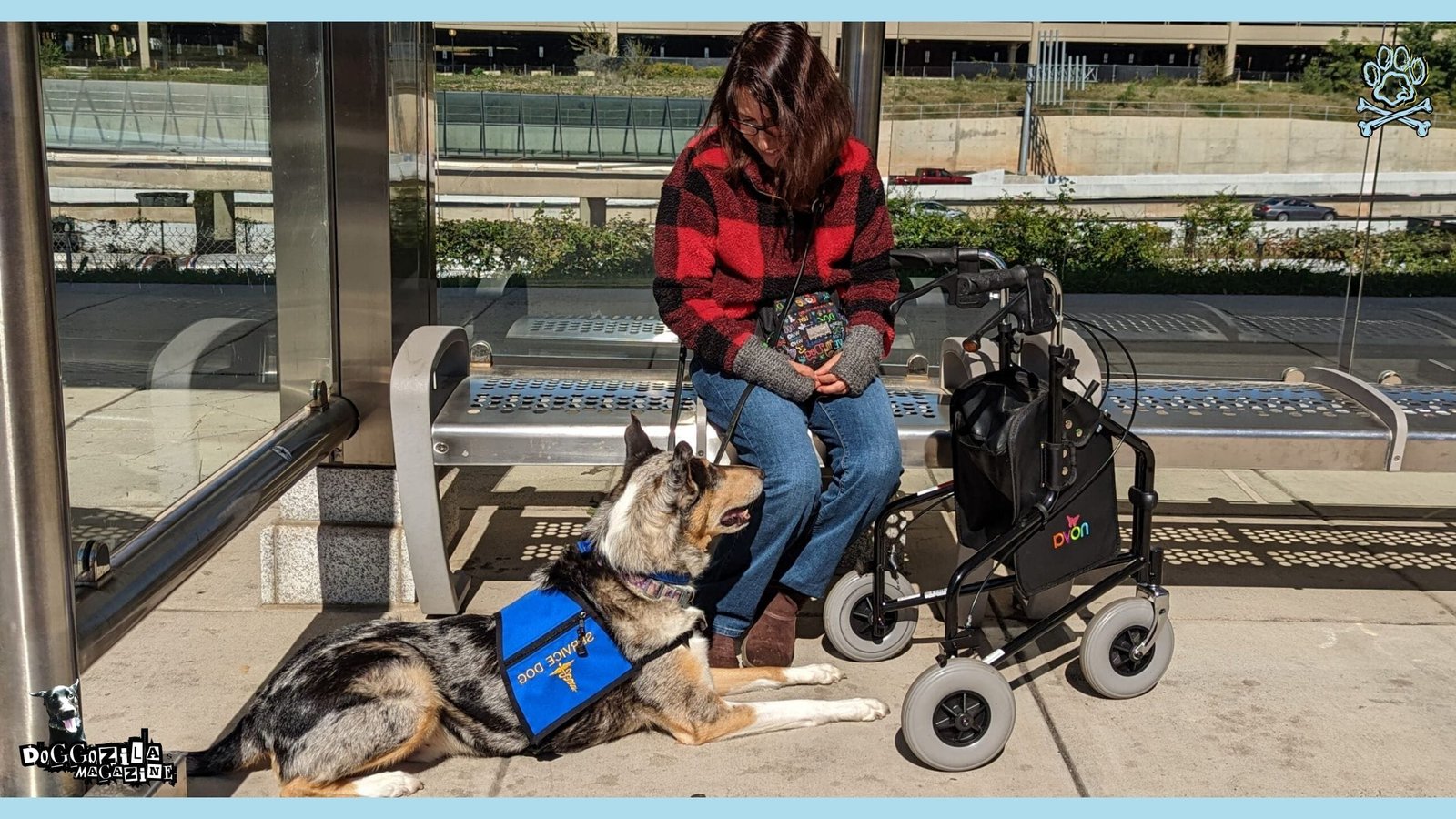
Service Dogs Type That Save People in Real Danger
Our team at Doggozila Magazine wanted to mention also the Search and Rescue Dogs, even if they are not part from these types of service dogs, they need to be mention always! These dogs offer help to the people in their really hard times. When there is a earthquake and everything is crushed, the search and rescue dogs go and find people under the buildings to save their lives. When there is a fire and everything is burning, these dogs run in the fire to rescue the people in danger. These special kind of dogs that give people unmatched service are one of a kind and deserve to be mentioned!
A Brief Summary of Different Types Service Dogs
Collectively, these different types of service dogs have a tremendous impact on the lives of individuals with disabilities, aiding their independence, safety, and overall quality of life. As we continue to appreciate the incredible work of service dogs, it is crucial to recognize their indispensable role and the ongoing efforts to ensure their well-being and inclusion in society. Remember, service dogs are more than just highly trained animals; they are companions, helpers, and lifelines for those in need. Let us celebrate and support the invaluable bond between humans and their service dogs.









